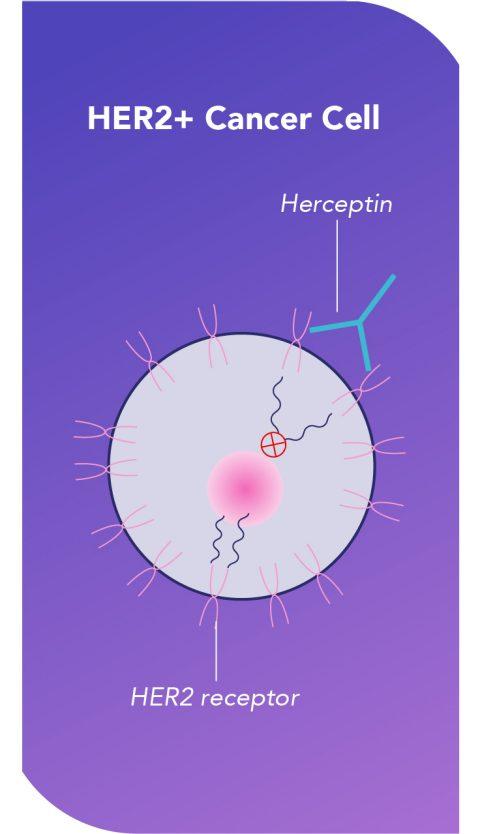In a groundbreaking advancement poised to accelerate drug development for HER2-positive breast cancer, researchers have successfully constructed a real-world external control arm, marking a significant shift in clinical trial design. Detailed in a recent report by OncLive, this innovative approach leverages real-world data to provide a robust comparator group, potentially streamlining the evaluation of new therapies and expediting their path to patients. As the oncology community continues to seek more efficient and patient-centric methods, this development signals a promising step forward in tackling one of the most aggressive forms of breast cancer.
Advancing HER2 Positive Breast Cancer Trials Through Real World External Control Arms
In a groundbreaking approach to streamline clinical evaluations, researchers have successfully developed a real-world external control arm (ECA) to support drug development for HER2-positive breast cancer. This innovative strategy leverages aggregated patient data from diverse real-world settings, improving trial efficiency and potentially accelerating regulatory approvals. By carefully matching clinical characteristics and treatment histories, the external control arm offers a robust comparator group that circumvents some of the challenges traditionally faced in randomized controlled trials, such as prolonged enrollment and ethical considerations.
Key benefits of this real-world ECA approach include:
- Increased enrollment speed: Access to comprehensive patient datasets reduces dependency on recruiting new control arm participants.
- Enhanced patient diversity: Incorporation of data from varied demographics and treatment contexts reflects real clinical practice more accurately.
- Cost efficiency: Lower trial costs due to reduced need for new patient recruitment and monitoring.
| Aspect | Traditional Control Arm | Real-World External Control Arm |
|---|---|---|
| Enrollment Time | 12-18 months | 4-6 months |
| Patient Diversity | Limited | Broad and representative |
| Cost | High | Moderate |
This real-world external control arm marks a significant advancement in oncology research methodology, enabling more rapid and precise evaluation of promising HER2+ therapies. As data analytics and electronic health records continue to improve, researchers anticipate broader adoption of ECAs across multiple cancer types, transforming clinical trial paradigms worldwide.
Enhancing Drug Development Efficiency with External Control Data Integration
Integrating external control data into drug development pipelines is revolutionizing clinical research, particularly in the realm of HER2+ breast cancer therapies. By harnessing real-world data (RWD) sources-such as electronic health records and patient registries-researchers have built a robust external control arm that complements traditional randomized controlled trials. This approach addresses the challenges of limited control group enrollment, accelerates timeline efficiency, and enhances the statistical power of emerging treatments. Key benefits observed include:
- Reduced patient burden: Fewer patients are required to be randomized into control groups, enabling quicker access to innovative therapies.
- Cost savings: Leveraging existing datasets diminishes the financial pressures of conducting large-scale control arms.
- Improved data diversity: Real-world cohorts provide a broader patient demographic, ensuring findings are more generalizable.
| Metric | Traditional Control Arm | External Control Arm |
|---|---|---|
| Average Enrollment Time | 18 months | 6 months |
| Cost per Patient | $50,000 | $15,000 |
| Diversity Index* | 0.65 | 0.85 |
*Diversity Index reflects patient demographic variety ranging from 0 (least diverse) to 1 (most diverse).
The success of this external control model illustrates a critical shift in oncology research toward data-driven, patient-centered clinical trials. As regulatory bodies grow increasingly receptive to RWD integration, pharmaceutical developers stand to benefit from more agile trial designs without compromising scientific rigor. Future applications are expected to extend beyond HER2+ breast cancer, fostering innovation across numerous therapeutic areas while streamlining the path from discovery to approval.
Recommendations for Implementing Real World Evidence in Oncology Research
To successfully integrate Real World Evidence (RWE) into oncology research, it is vital to prioritize data quality and standardization. Leveraging comprehensive electronic health records and registries ensures robust external control arms accurately reflect patient populations. Researchers must also implement stringent inclusion and exclusion criteria aligned with clinical trial protocols to maintain comparability. Additionally, transparent documentation of data sources and patient selection methodologies enhances reproducibility and regulatory acceptance.
Equally important is embracing advanced analytical methods to address confounding factors inherent in observational data. Propensity score matching and sensitivity analyses are essential tools to mitigate bias and validate findings. Collaboration among oncologists, biostatisticians, and data scientists further strengthens study design and interpretation. Below is a summary of key recommendations for optimizing RWE use in HER2+ breast cancer drug development:
- Ensure data completeness: Prioritize datasets with detailed treatment and outcome variables.
- Adopt standardized terminologies: Use uniform coding systems like ICD and SNOMED.
- Apply rigorous statistical controls: Employ methods to correct for confounding and selection bias.
- Engage regulatory agencies early: Collaborate to align study parameters with approval standards.
- Foster multidisciplinary teams: Combine clinical and analytical expertise for robust evidence generation.
| Challenge | Recommended Strategy |
|---|---|
| Data variability across sites | Implement centralized data harmonization protocols |
| Patient selection bias | Use propensity score Matching and sensitivity analyses to adjust for confounding |
| Incomplete or missing data | Prioritize high-quality data sources and apply imputation techniques where appropriate |
| Regulatory uncertainty | Engage early with regulatory agencies to align evidence generation with expectations |
| Lack of multidisciplinary expertise | Build collaborative teams including clinicians, statisticians, and data scientists |
To Conclude
As the development of new therapies for HER2-positive breast cancer continues to be a critical priority, the creation of a real-world external control arm marks a significant advancement in clinical research methodology. By leveraging real-world data to streamline trial processes, researchers aim to accelerate drug development timelines while maintaining rigorous standards of evidence. This innovative approach not only holds promise for expediting access to potentially life-saving treatments but also sets a precedent for future oncology studies seeking more efficient and patient-centered trial designs.
